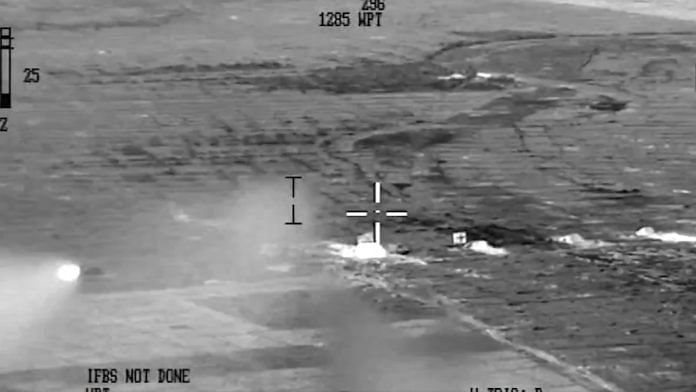There’s a famous quote from the Spiderman movie that’s often quoted: “With great power comes great responsibility.” This is the reason India decided to pull back, instead of going for the complete annihilation of Pakistan this past week.
The massacre of innocent tourists in Pahalgam, killed mainly because they were Hindus, enraged the entire nation. With bated breath, we all awaited the eventual hammer to fall on Pakistan. The question was not “if” but “when and how much”.
This fundamental change in our outlook and expectations of a thumping action against terrorism has been enabled by Prime Minister Narendra Modi led government’s previous actions against terrorism.
The old doctrine
Between 2008 and 2014, India witnessed multiple acts of terrorism, including the now infamous 26/11 attacks in Mumbai. Prominent being 2008 Jaipur Blasts that killed 64 people and injured 140; 2008 Ahmedabad Blasts where 18 bomb blasts within 70 minutes killed 57 people and injured over 150; 26/11 Mumbai Attacks resulted in 166 deaths and over 300 injuries; 2013 Hyderabad Twin Blasts that killed 17 people and injured over 100.
Despite such major attacks, all that the UPA government did was exchange dossiers. We would send over dossiers to Pakistan, and they in turn would send it back – claiming “no-concrete proof.” Time and again, India’s efforts at bringing terrorists to book were thwarted by Pakistan, and despite having an inclination of what was actually going on, the rest of the world continued to laugh behind our backs and failed to take any action against the Pakistan based terror factories.
The Modi Doctrine
All of this changed in June 2015, when India, under the decisive leadership of PM Modi, changed the security doctrine fundamentally. From “hum LOC cross nahi karenge (we won’t cross the Line of Control)” in International Borders championed by the previous governments, it turned into giving complete freedom to our armed forces to go after terrorists wherever they were located.
The impact could be felt immediately. Indian armed forces, inspired by a decisive Prime Minister and fearless military leadership, went after rogue elements across the borders. First in Myanmar, then multiple times in Pakistan. Terrorist attacks in Chandel Uri, Balakot, Pulwama and now Pahalgam were responded to by Indian forces by attacking and destroying terrorists in their hideouts.
A dog’s tail
Despite this, it is apparent now that most of the world, including Pakistan, had failed to truly gauge the steely resolve of our government and the nation in dealing with terrorism and any attempts at destabilising our nation. Their misadventures continued in the form of terrorist incursions into India. Though sporadic, Pakistan sent a steady stream of terrorists who attempted to infiltrate into India. They took measured steps to further their doctrine of “death by hundred cuts” for India. But Pahalgam was a step too far.
Operation Sindoor – India stared back
Instead of rushing in with a retaliation, our government and security forces took their time to identify and locate major terrorist training camps and launch pads, which had been the fulcrum of their terror operations against India. On the night of 7 May, as the rest of the nation slept, “Operation Sindoor” was launched. Our forces rained hell upon the terrorists in places they considered their safe-haven.
In a simultaneous attack, nine major terror hubs in Pakistan were attacked – Markaz Subhan Allah Bahawalpur terrorist Masood Azhar led Jaish-E-Mohammad (JeM) headquarters; Markaz Taiba Murkidke Lashkar-e-Tayiba (LeT); Sarjal, Tehra Kalan (JeM); Mehmoona Joya, Sialkot, Hijbul Mujahideen (HM); Markaz Ahle Hadith, Barnala (LeT); Markaz Abbas, Kotli (JeM); Maskar Raheel Shahid, Kotli (HM); Shawai Nalla Camap, Muzaffarabad (LeT); and Syedna Bilal Camp Muzaffarabad (JeM). These camps housed terror factories, that have been churning out terrorists for over 30 years, all Pakistan based and Pakistan sponsored terror organisations.
True to their character, Pakistan aided by China and Turkey responded by attacking civilian areas in the border regions of Jammu and Kashmir, Punjab, Rajasthan, and Gujarat, and they also dared to attack our military installations and air bases. They used guns, tanks, missiles, drones, and even fired ballistic missiles, but all their attacks were swiftly and effectively countered by India’s Integrated Counter-Unmanned Aerial System (C-UAS) Grid and Air Defence networks.
Our forces responded in kind, and have destroyed multiple air bases deep inside Pakistan, including Nur Khan Airbase, Rawalpindi; Sargodha; Rahim Yar Khan Airbase; Bholari; Jacobabad; Sukkur Airbase; Rafiqui; Murid Airbase; Chunian; Pasrur; and Sialkot Air Base.
These strikes not only demolished Pakistani ability to respond, it also demoralised the entire Pakistani Air Force and Army, leaving them reeling. It is this basic fact that caused Pakistan to call for mercy, with the Pakistan’s Director General of Military Operations requesting for a call to the Indian DGMO on 14 May that led to the ceasefire.
India – A global power
Operation Sindoor has showcased Indian military prowess to the world, shattering Pakistan’s defences and dignity. India’s battle-tested air defence systems have proven their worth, capable of withstanding even ballistic missile attacks, underscoring our military superiority on the global stage.
This is why, the Indian defence stocks have started to skyrocket. India has maintained suspension of the Indus Waters Treaty, and revised its war doctrine, which now declares that “any future terror attack will be treated as an act of war.” India’s unyielding stance against terrorism and its emergence as a formidable global power have been cemented.
Raju Bista is the Member of Parliament from Darjeeling and a national spokesperson for the BJP. He tweets @RajuBistaBJP. Views are personal.






